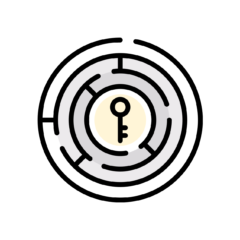Cover Letter and References
I’m wrapping up my resume series with the documentation that brackets your resume; the cover letter and references. I’ve mentioned a bit about cover letters, but I will go into a bit more detail.
A high percentage of recruiters don’t read cover letters. We don’t have the time. There are a couple of ways to ‘sneak’ a cover letter in front of recruiter or hiring manager if you absolutely believe it’s crucial to make your case. The first way, quite simply, is to include it as part of your resume. If you do this, do *not* have a templated coverletter. You will be best served writing a targeted cover letter for each employer you feel the need use it. It is ESPECIALLY important to follow the KISS rule.
Candidates seem to stress out over how to address the cover letter. ‘Dear’?’ Who? If you don’t have a name, you are best served keeping it generic and *gender neutral*. ‘Dear Hiring Professional’; ‘To Acme Widget’. It is also perfectly acceptable to *skip* the salutation. Whatever you do, avoid ‘Dear Sirs’.
So, onto the meat of the cover letter. Reiterating what I’ve said before, it should be no more than three paragraphs, the meat of which is in the second. The first paragraph should address the position/department of interest, how you heard about the opportunity (this is where you mention that you were referred by Mary O’Malley in accounting). If it was a job board, indicate which one. Believe it or not, jobs may be tailored for different job boards, and mentioning the particular one can help the recruiter orient him/herself quickly.
The second paragraph is where you build the case as to why you are a strong candidate for the position. In no more than 3-5 sentences, tell the reader the relevant skills (including the company that are applicable to this opening/business group. This should include detailed examples such as a project, role, or client you handled.
Final paragraph (which is optional) is your availability and the best way to contact you (phone, email). End on a positive note, telling them you are looking forward to communication from them.
Closing should be your name and contact info.
Example:
Respectfully,
Joshua Greene, PMP
334-555-0333
Things to avoid in a cover letter include too much personal information (avoid the hard luck story), and covering every thing you have done that *might* qualify you for the job. Don’t gush on and on about how much you respect the company, it’s reputation, etc. You’ll have time for that in conversations.
Let’s happily assume you have gone through interviews and there is an offer pending. The company asks you for references. It is amazing some of the references I have seen out there. Do *not* put your references on your resume. Keep them until you are asked for them.
Your references should know your work; this means not just *what* you did, but how you interacted with other teams and your general work ethic. You should include at least one manager who oversaw your work, preferably someone that had the authority to give you feedback on your performance.
Try and keep your references updated. If you’ve been at Procter and Gamble for four years, listing your manager from your previous job but no one from your current company sends up huge red flags. Always try and keep tabs on who is where (LinkedIn is great for this). Personal phone and email addresses are often preferred by your references.
Make sure you ask your references if they are OK with you using them, don’t assume they are willing to. If you are in a situation where you cannot give references (for example, much of my own recent employment history is contracting at Microsoft, and they have a very strict policy against managers giving professional references for contractors), find someone like a client or business partner that can do it.
I usually recommend 3-5 references. Keep in mind that professional references are *different* than employment references that you put on an application.
Good luck, and hopefully you’ll have clearer understanding of the tools in your sales kit.
